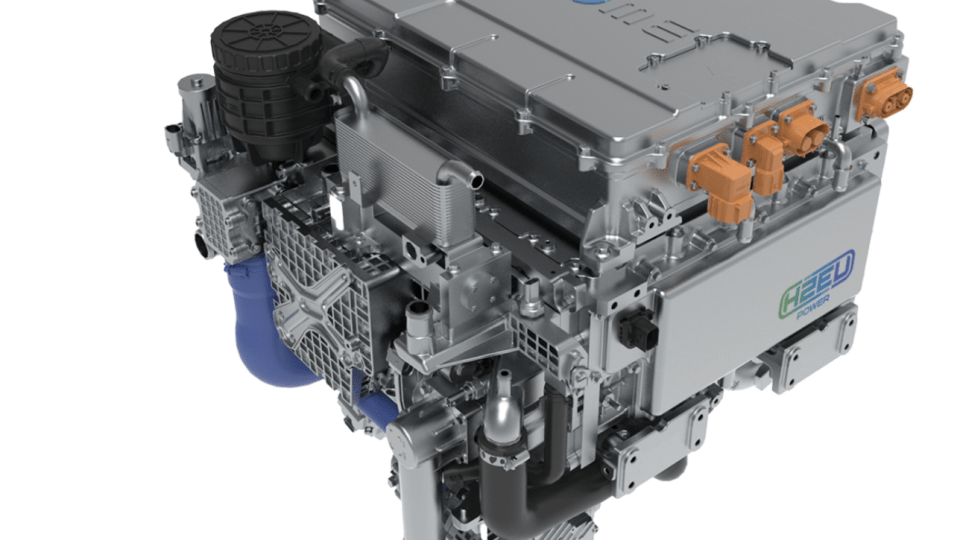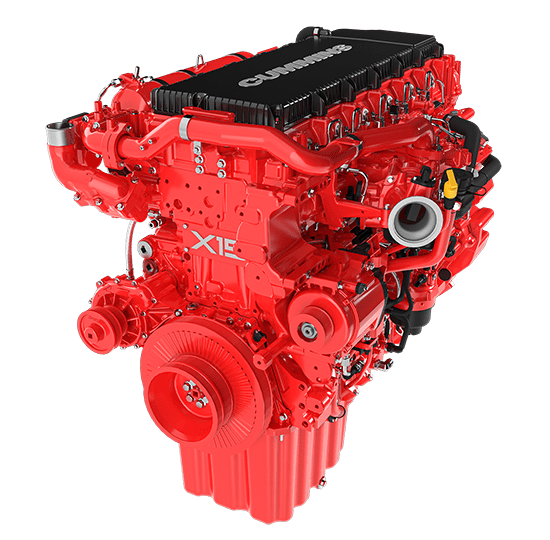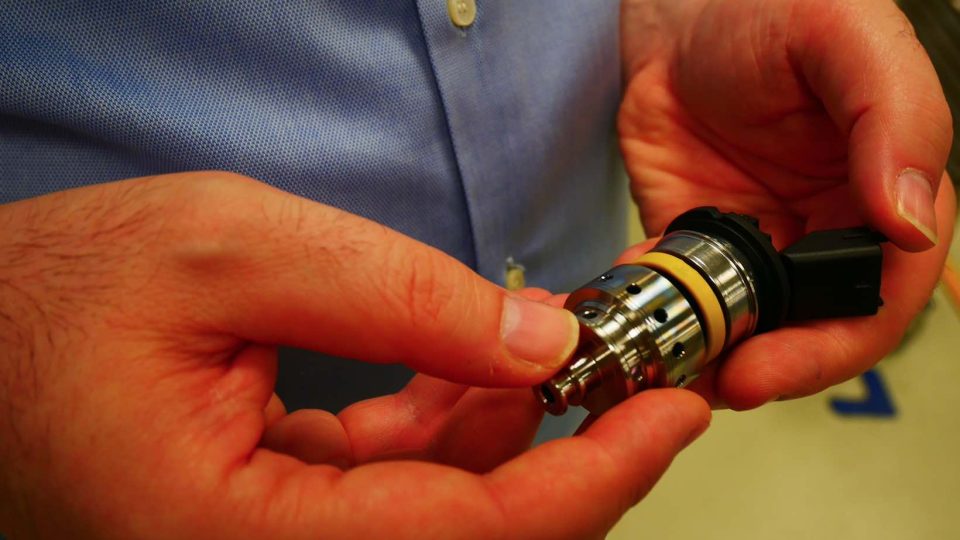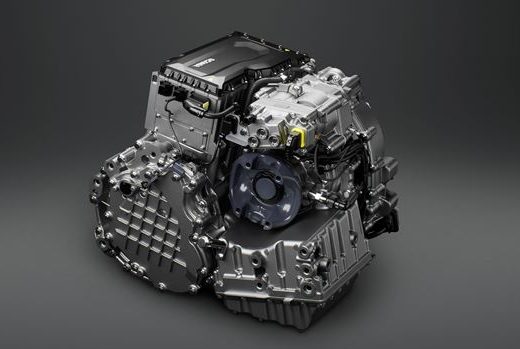How to deal with fire risks on alternative fuel buses
“Alternative fuel buses don’t mean bigger fire risks, but different risks”. New components to deal with, new skills to be gained, a good degree of basic (and less basic) knowledge that should be achieved in order to deal with alternative fuel vehicles in the safest way possible.
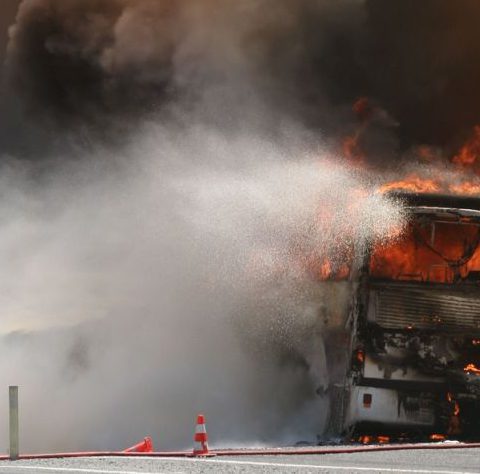
“Alternative fuel buses don’t mean bigger fire risks, but different risks”. New components to deal with, new skills to be gained, a good degree of basic (and less basic) knowledge that should be achieved in order to deal with alternative fuel vehicles in the safest way possible.
At Busworld North America in Detroit, last week, we run into DAFO’s stand and had an interesting discussion with Risk Management Specialist Tommy Carnebo. After 20 years as a professional firefighter, he joined DAFO in late 2021 and now focuses on training, information, risk assessments. With a particular focus on alternative drive vehicles.
Our conversation ended up in a video educational focusing on simple recommendations about how to reduce risks in the operation of alternative drive buses.
We see a pretty rapid change in the bus market, that is rapidly going into alternative fuels: we deal with CNG buses, LNG buses, hydrogen buses and also, of course, electric buses. And this is basically what I would like to talk a little bit about today.
I would like to start to talk about electric buses. And I would like to remind you that alternative fuel buses are not a big risk. It’s a different risk. It’s not a bigger challenge, it’s a different challenge.
When it comes to a combustion engine, there is a clear regulation: it’s mandatory in Europe to have both detection system and suppression system. But when it comes to electric buses, you don’t even need to have a detection system.
Electric buses, smoke, fire
The energy for electric buses come from the battery. And it’s a new challenge if they eventually catch fire. Batteries can catch fire from external violence, some type of electrical violence, and also also if you expose them to heat and cold.
So basically we need we need to adapt the system and the buses and also the training of the personnel to understand the risks of this vehicles and see if we need to do some changes, because if there is, it’s unlikely but can happen, any type of malfunction of the battery on the electric bus, the battery will start to smoke. And that is the key for making it safer.
As a firefighter, I’ve always known that if there is no smoke, there is no fire. If there is smoke, there is a fire. If there’s a fire, there’s smoke. But this reasoning doesn’t work when it comes to batteries, because batteries actually start to smoke before the fire starts. So that is actually something that we have to deal with, because if there is a fire in a bus and the battery catches fire, you will go into what’s called a thermal runaway. And if you have a thermal runaway, you will not be able to put that fire out. But if we use the information we get from the smoke, then we can actually detect, start to cool and stop the batteries from catching fire.
Alternative fuel buses are working in a new way. We need to train drivers, operators, service and maintenance personnel on batteries because the batteries are the new risk and we need to have training and information about that.
CNG and hydrogen, they are similar
And when it comes to the CNG-powered and the hydrogen buses, they are more or less the same. The energy that powers the vehicle is contained in pressure tanks. Pressure can go from 250 up to 700 bars. And that itself is not a risk. But if there is some heating of that tank, the gas inside the tank will start to expand. If we don’t release the pressure, the tank can actually explode.
A CNG bus a few time ago had a striking accident in Italy. What happened there is that pressure was released. And this is good. But this poses a new challenges as you have a jet flame 15-meter long out of the bus.
And it when it comes to hydrogen, is has similar properties as CNG. But it operates with higher pressure. It can actually be stored at up to 700 bars in the tank. Then, the jet flame coming out from the bus in case of accident can actually be over 40 meters long. So that is also a new challenge we need to bring up to up to up to the table so we can talk about it.
Protect batteries and tanks!
So basically, we need to protect different areas on the bus. Not just only the motors and the combustion engine. We need to protect the hydrogen or the CNG tanks, as well as the batteries.
The new thing with this type of vehicle is that you need to have information on how to deal with it.
What should also be known is that, if you have a damaged electric bus, maybe it has been involved in an accident going into a tunnel and got some marks on the battery pack that’s often placed on the roof, then the bus needs to be standing in a quarantine place. This means a place where the bus has to stay parked for at least 14 days before you can start working on the bus. The challenge here is that most operators don’t have that area because there can’t be anything close to that damaged bus within 15 meters in a round circle.
Keep in contact with the fire brigade
We don’t need the highlights we had last summer from Paris, from London, from Germany, when electric buses caught fire during transit, during operation, we don’t need that and then we need to work together. And when I say “work together”, please don’t forget the fire brigade. The fire brigade are the ones that respond to the fires. So if you have a local fire brigade close to bus depots or where the buses are operated, please contact them. Invite them to see the bus. Tell them how the bus is working, where everything is located on the bus. Then in case of any fires in the bus depots, the fire brigade has knowledge already. And they can help you better.




